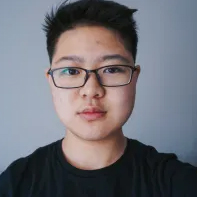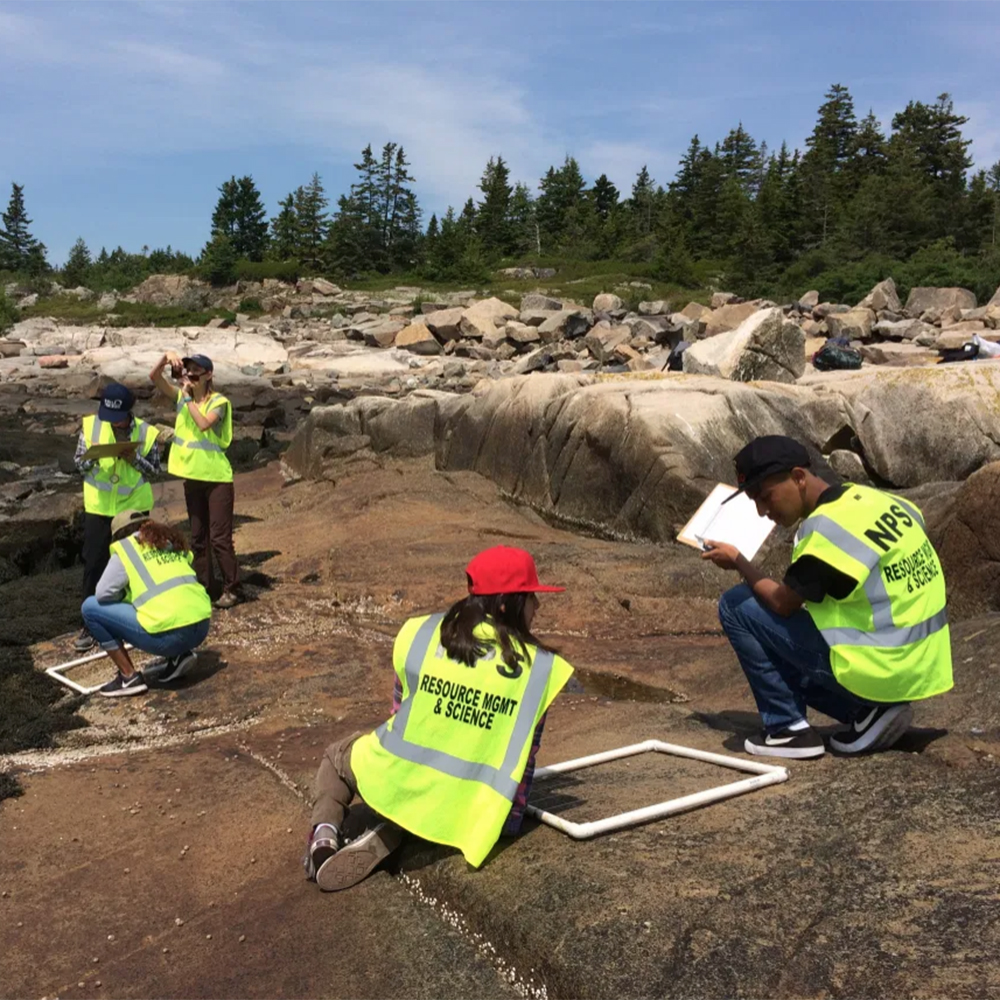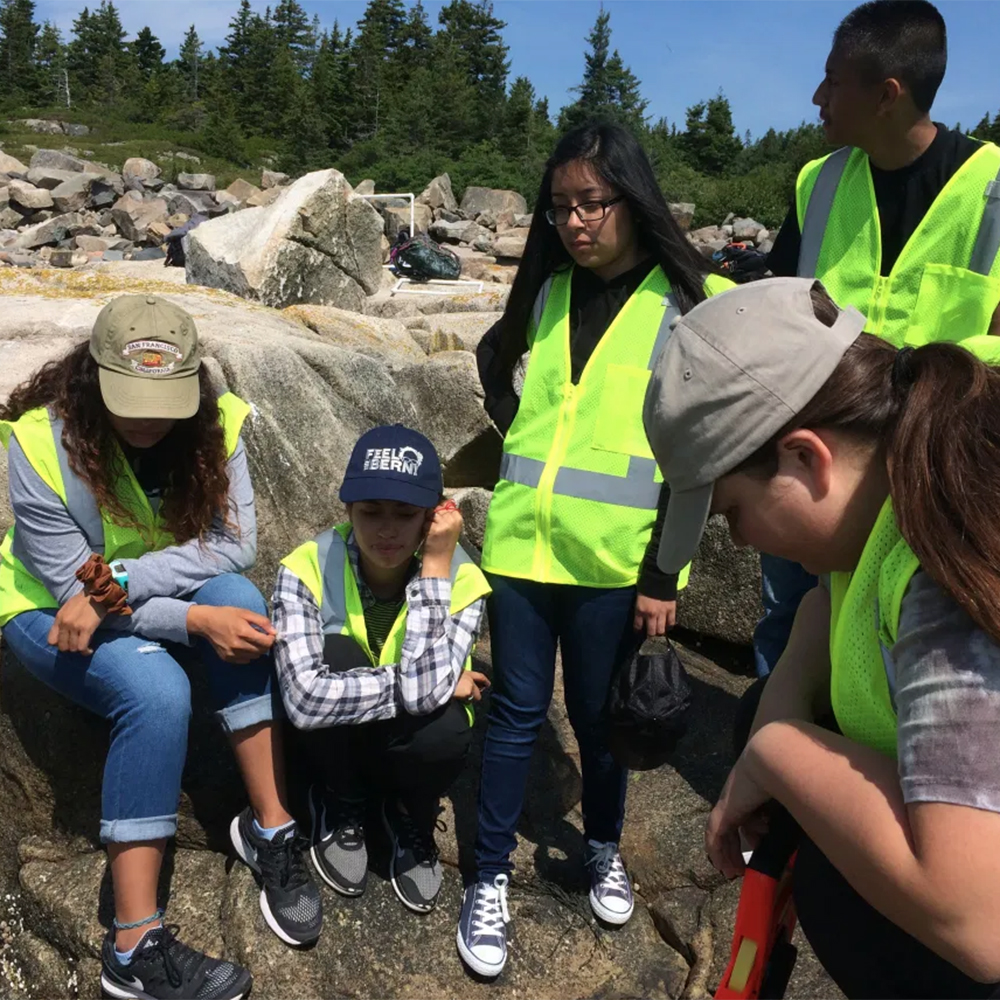.
Conducting “Real Science” Alongside Real Scientists at Acadia National Park
By Kyle Ang, Earthwatch Ignite Fellow 2016
.

I wanted to do real science.
I was in my junior year of high school, and I knew I wanted to do something hands-on. I wanted to contribute to expanding humanity’s library of knowledge and learn more about what it truly meant to be a scientist.
After weeks of searching for opportunities, nearly all research programs popped up with prices of $2,000 and upwards. There was no way I could afford them, so I continued looking for others. I could hardly count how many websites I visited and signed up for to get updates.
Then, two months later, I received an email that said, “Are you a high school sophomore or junior in the LA area? Spend two weeks next summer participating on a fully funded, scientific research expedition alongside scientists and other students in a natural landscape.”
It was perfect. I applied and was accepted into Earthwatch’s Ignite program for Climate Change: Sea to Trees at Acadia National Park.
.

.
Forward to July 11, 2016, I set off on a six-hour flight from LA to Maine with eight other high school students from Los Angeles County. It was exciting to be on my own for the first time traveling to a new place, with new people. We had a six-hour layover at the Boston Logan International Airport before we actually arrived in Maine. During the wait, my team and I bonded over playing cards, telling jokes, and trying to keep each other awake.
We stayed at the research and education campus of Schoodic Institute where we spent two weeks hopping from different field sites and tide pools to study the effects of ocean acidification on intertidal communities.
I learned about how carbon dioxide, the pumping of fossil fuels, and burning of chemicals into our atmosphere has created a disruption between interactions among the organisms in our oceans. We discussed the urgent issue of lowering pH levels and how our oceans’ rising acidity is dissolving the shells of organisms that contribute to a large part of Acadia’s natural resources and marine ecosystems.
.
It struck me then that we, as inhabitants of our planet, must act urgently in every way possible to take care of our environment and preserve its natural beauty for future generations to come.
.
When we headed out into the field, in our neon yellow vests, we collected crabs while crawling through cobble, ate freshly salted seaweed straight from the rocks, examined algae and even watched barnacles open up their mouths to feast on sea plankton. We mixed epoxy glue for our settlement plates and discovered a new side to science as we watched researchers drill holes into volcanic rock.
The best part for me was being able to experience so many new things. I had never been to the east coast or a tide pool. I hadn’t eaten lobster, scones, whoopie pies, s’mores, or had a campfire. I had never been away from my house for so long, bunked/slept over with friends, watched the sunrise while eating my breakfast on top of rocks facing the ocean, nor had I picked fresh blueberries off of bushes before.
I’d never gone on a mystery adventure drive at 10 p.m. under the full moon to search a wobbling boat dock for a shoal of squid, or gone moth hunting, or had multiple caterpillars waddling up and down my arm. (My teammates and I named one Francesca.) I hadn’t gone on a hike up Alder trail in 90-degree weather (probably my most challenging hike to date), and I surely never had as many bug bites as I got during this expedition. (I ended up with 44. I guess it was the mosquitoes’ way of welcoming me to Maine!) And to add to all of that, I can even say now that I’ve met the inspiring explorer, Sylvia Earle.
.


.
I time-lapsed fast moving clouds, painfully slow snails, and fascinatingly bizarre barnacles feeding on sea-plankton. I learned how to use a compass and search for our sites using a handheld GPS. (We had cool site names like Mordor, Hogwarts, Tabletop, and Blueberry Hill.) I’ve always viewed data-entry as tedious, but with this expedition, I realized it was actually satisfying. I learned how to make settlement plates to place at our sites. I learned to avoid slippery sea lettuce—or “the green slime of death,” as John Cigliano, our lead scientist, called it.
When I got home, I wanted to tell everyone that I watched a scientist drill holes into volcanic rock. I wanted to let them know, “Scientists aren’t just nerds in lab coats!” Some of them stared at me with amusement as I gushed on about barnacles opening up to eat sea plankton, and about how crabs leave behind dead skin in the shape of cool translucent shells. I wanted to tell them how amazing it was to walk through dirt paths with nothing else but green trees and fresh air surrounding you. I opened up the topic of how worrying it is for people to still doubt climate change.
.
Most of all, I was excited to tell them I contributed to science. I did field work, lab experiments, and worked alongside real scientists. I wanted to tell them all about how wonderful it felt to be a part of something that would actually impact the welfare of our planet.
I realized that while science exists to study and answer questions still unanswered, sometimes, science does not work the way we expect it to. It takes time, error, failure, and countless tries. And sometimes, while it does not answer our questions, it can present new ones that continue to fuel humanity’s insatiable curiosity to seek answers.
Now, as a freshman exploring the arts, music, and sciences at the University of Rochester, I look back on my Earthwatch expedition with pride and gratitude knowing that it was an experience I will continue to share with others and remember for many years to come.
.

Sign up for the Earthwatch Newsletter
Be the first to know about new expeditions, stories from the field, and exciting Earthwatch news.